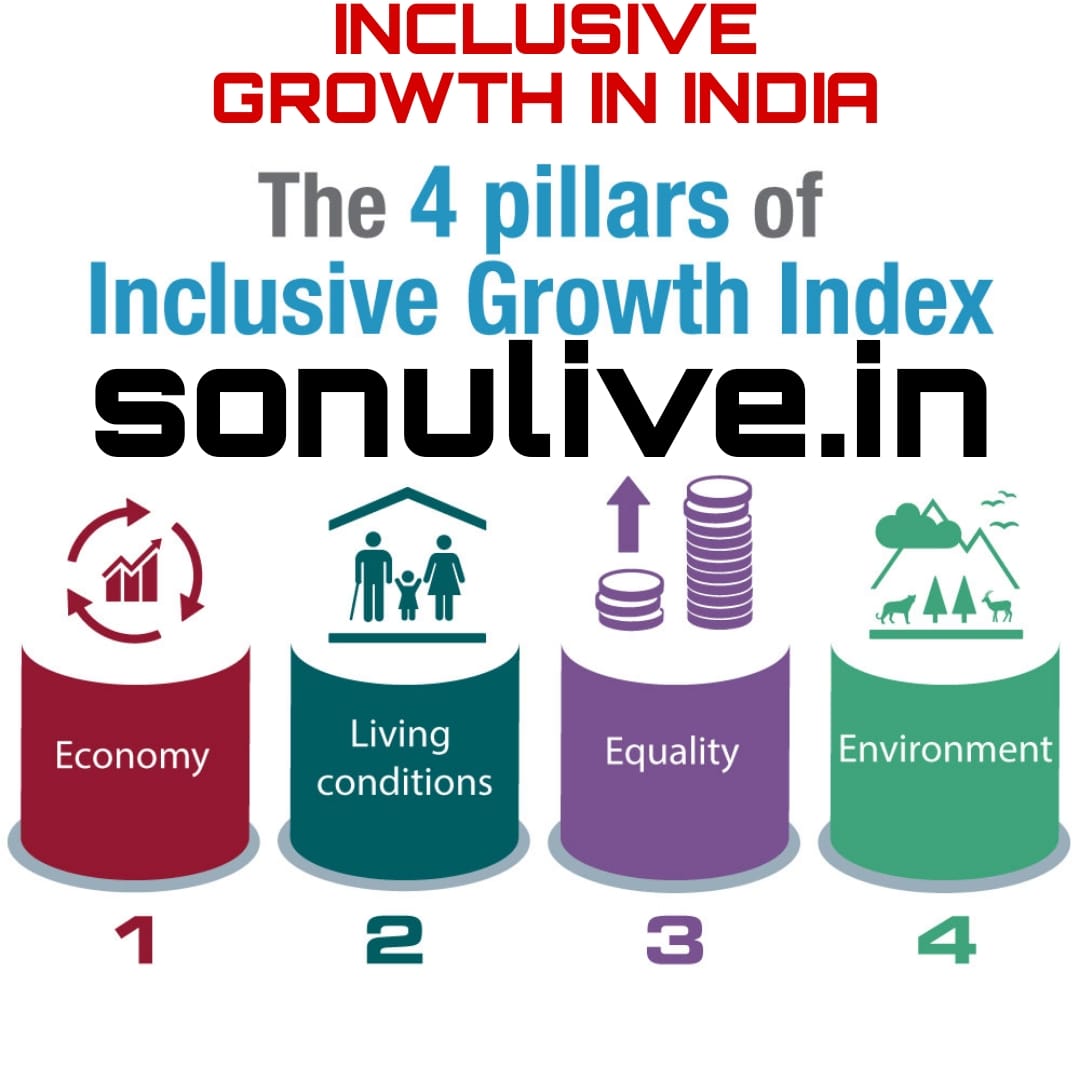Hello everyone welcome to my blog, in this article I’m going to discuss about INCLUSIVE GROWTH IN INDIA and Capitalism has guided word’s economy to earn presented economy prosperity however it encourages short sightedness and contributes to disparity between rich and poor .In this light what would be correct to believe an adopt Capitalism for bringing inclusive growth in India.
Inclusive growth in India refers to a form of economic development that aims to bring prosperity and well-being to all sections of society, not just a select few. This means reducing poverty, narrowing income gaps. And ensuring that everyone has the opportunity to participate in and benefit from economic growth.
Here are some key aspects of inclusive growth in India:
- Focus on the marginalized: Addressing the needs of traditionally disadvantaged groups like women, minorities, rural communities, and tribal populations. This involves providing them with access to education, healthcare, skill development, and economic opportunities.
- Reduction in inequality: Bridging the gap between the rich and the poor, both in terms of income and access to resources and opportunities. This can be achieved through progressive taxation, redistribution of wealth, and targeted social safety nets.
- Sustainable development: Ensuring that economic growth is environmentally friendly and doesn’t deplete natural resources for future generations. This includes promoting renewable energy, sustainable agriculture, and responsible waste management.
- Job creation: Generating quality jobs with fair wages and social security across various sectors of the economy. This is crucial for improving livelihoods and reducing poverty.
- Regional balanced development: Reducing disparities in economic development between different parts of the country. This involves investing in infrastructure, attracting businesses, and creating opportunities in less developed regions.
Challenges to achieving inclusive growth in India:
- Large population and entrenched inequalities: India’s vast population and historical social hierarchies pose significant challenges to distributing resources. And opportunities equitably.
- Informal sector dominance: A large portion of the Indian workforce is employed in the informal sector, which often lacks job security, social protections. And access to benefits.
- Corruption and bureaucratic hurdles: Inefficient governance and corruption can hinder economic development. And impede access to critical services and resources for the marginalized.
- Access to education and healthcare: Unequal access to quality education. And healthcare can perpetuate poverty and limit opportunities for upward mobility.
Initiatives for promoting inclusive growth in India:
- Government programs: The Indian government has launched various programs and schemes aimed at poverty reduction, social welfare, and infrastructure development. These include MGNREGA, Ayushman Bharat, and Skill India.
- Corporate social responsibility: Encouraging private companies to contribute to social development through responsible CSR initiatives focused on education, healthcare. And skill development.
- Civil society organizations: The role of NGOs and grassroots organizations in working with communities. And advocating for their rights is crucial for inclusive development.
- Sustainable development goals: Aligning India’s development policies with the UN Sustainable Development Goals (SDGs) that focus on ending poverty, hunger, and inequality.
Achieving inclusive growth in India is a complex and long-term endeavor that requires collaboration. And commitment from the government, private sector, civil society, and individual citizens. By addressing the challenges. And focusing on the key aspects mentioned above, India can move towards a more equitable and sustainable future for all its citizens.
Arguments for capitalism:
- Economic growth: Historically, capitalist economies have generally outperformed others in terms of overall GDP growth. India’s rapid economic expansion in recent decades can be partly attributed to liberalization and increased private sector participation.
- Innovation and efficiency: Capitalism incentivizes competition and risk-taking, which can lead to innovation and productivity gains. This can benefit the entire economy, including the poor, through lower prices and improved product quality.
- Job creation: Private businesses are the primary engine of job creation in most capitalist economies. This can be especially important for developing countries like India, which struggle with high unemployment rates.
Arguments against capitalism:
- Income inequality: While economies may grow overall, the benefits often accrue disproportionately to the wealthy, leading to widening income gaps. This can exacerbate poverty and social unrest.
- Exploitation and environmental damage: Unregulated capitalism can lead to the exploitation of workers and the environment in pursuit of profit. This can have negative consequences for long-term development and public well-being.
- Social exclusion: Markets often fail to provide essential goods and services to marginalized communities, leading to their exclusion from economic prosperity. This can trap people in poverty and perpetuate social inequalities.
Finding a middle ground for inclusive growth:
- Stronger regulation: Government intervention is necessary to prevent market failures, protect workers, and ensure environmental sustainability. This can create a more level playing field and prevent wealth concentration.
- Social safety nets: Governments need to provide safety nets for those who fall behind, such as unemployment benefits and social insurance programs. This can help to mitigate the negative effects of inequality and prevent poverty.
- Investing in human capital: Education, healthcare, and skills development are crucial for ensuring that everyone has the opportunity to participate in the economy. And benefit from growth.
- Inclusive development policies: Specific policies aimed at empowering marginalized communities, such as women. And rural populations, are essential for achieving truly inclusive growth.
Ultimately, whether capitalism can be the right approach for inclusive growth in India depends on how it is implemented and regulated.. However, neglecting these critical measures can exacerbate existing inequalities and hinder inclusive growth.
It’s important to note that this is a complex issue with no easy answers. There are a variety of economic models and development strategies that have been implemented with varying degrees of success in different contexts. Finding the right approach for India will require careful consideration of its unique circumstances and ongoing debate and experimentation.
Read more:- https://sonulive.in/blue-economy-upsc/

